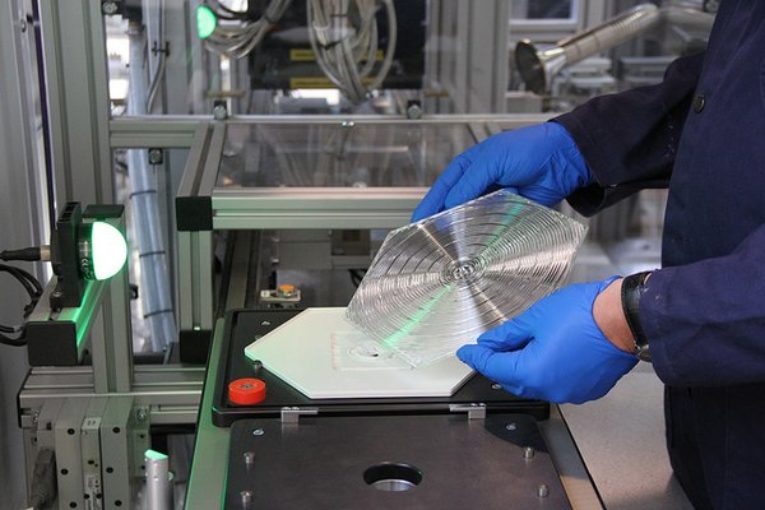
If you want proof that carbon pricing is both an environmental and economic solution, take a walk through the headquarters of Markham-based Pond Technologies. What you’ll find are containers and tanks bubbling green with algae that efficiently suck up greenhouse-gas emissions for breakfast, lunch and dinner.
The company has spent years perfecting the process of growing algae for the purpose of capturing industrial carbon emissions, and then transforming the scummy green stuff into products — everything from biofuels to nutraceuticals to fertilizers. As a semifinalist in the high-profile Carbon XPrize competition, it is getting global recognition for a decade of effort.
But as innovators in Ontario’s cleantech sector know, effort has its limitations. At some point, your technology needs to be demonstrated in a real-world setting — at an industrial site, for example — so future buyers can see the product in action and gain the confidence to place revenue-generating orders.
Despite impressive progress, “Canada’s low-carbon renaissance is very much on the ropes,” argues Céline Bak, president of research firm Analytica Advisors in a market report released Thursday. “The sector needs smart new policy from the public sector and engagement from Bay Street to build markets for low-carbon solutions, unlock private finance, and secure the prosperity that should accrue from investment in low-carbon innovation.”
How do you build those markets? How, for instance, do you get big, naturally risk-averse industrial companies to step up?
Stand behind them with a stick. Then, using that stick, dangle a carrot in front of them.
“This is exactly how cap-and-trade should work. Price carbon. Change industry thinking. Use revenues collected to help industry transition. Seed the innovative local solutions that will accelerate that transition, and demonstrate them on your home turf so foreign buyers can confidently buy into them.”
A perfect example: Ontario’s cap-and-trade program. It sets a cap, one that lowers over time, on the amount of greenhouse gases big companies in the province can emit. If an emitter busts through that cap it must purchase carbon allowances through an auction to make up the difference.
That’s the stick. To avoid it — to dodge that extra cost — companies are financially motivated to reduce their emissions.
A couple of weeks ago, Ontario raised nearly half a billion dollars through its first cap-and-trade auction, a strong performance by any measure. Another 15 quarterly auctions are scheduled between now and 2020, with $1.9 billion expected to be pulled in each year. By law, the proceeds from the auction must be invested in projects and programs that help to reduce greenhouse gas pollution.
It works out to heck of a lot of carrots.
The proceeds — the carrots — will be used to help businesses and homeowners become more energy-efficient, put more electric cars on the road, and support the development of low-carbon technologies.
Part of the money has also been committed to an Ontario Centres of Excellence program called TargetGHG, which is providing financial assistance to big companies in the cement, steel, energy and other high-emitting sectors that want to demonstrate new cleantech technologies — including Ontario innovations — that can reduce their emissions and cut carbon costs.
There are many homegrown cleantech companies poised to directly benefit from the program, and they’re already lining up big industrial partners, from ArcelorMittal Dofasco to U.S. Steel.
This is exactly how cap-and-trade should work. Price carbon. Change industry thinking. Use revenues collected to help industry transition. Seed the innovative local solutions that will accelerate that transition, and demonstrate them on your home turf so foreign buyers can confidently buy into them.
Both the environment and the economy win. Emissions are reduced, industry becomes more efficient, and a new generation of cleantech companies emerge as engines of job creation and export activity.
The economic opportunity can’t be overstated. The global cleantech market is projected to be worth $3 trillion by 2020, according to Analytica Advisors, which also tells us that 87 per cent of Canadian cleantech companies are overwhelmingly dependent on their ability to export.
It’s common sense that the chances these companies have of selling overseas are significantly diminished if they can’t land a deal at home, so deliberately making that connection between local innovators and local industry is crucial to their success — and the future of economic growth in Ontario.
There is a race underway, with jurisdictions across the globe vying for a larger slice of the pie. But by wisely using the carrots and sticks made possible through the cap-and-trade program, Ontario is primed to capture the opportunities that the low-carbon transition represents.
This article was co-written by Tyler Hamilton, business development manager for cleantech venture services at MaRS Discovery District, and originally appeared in the Toronto Star.
You can read more of the news on source
